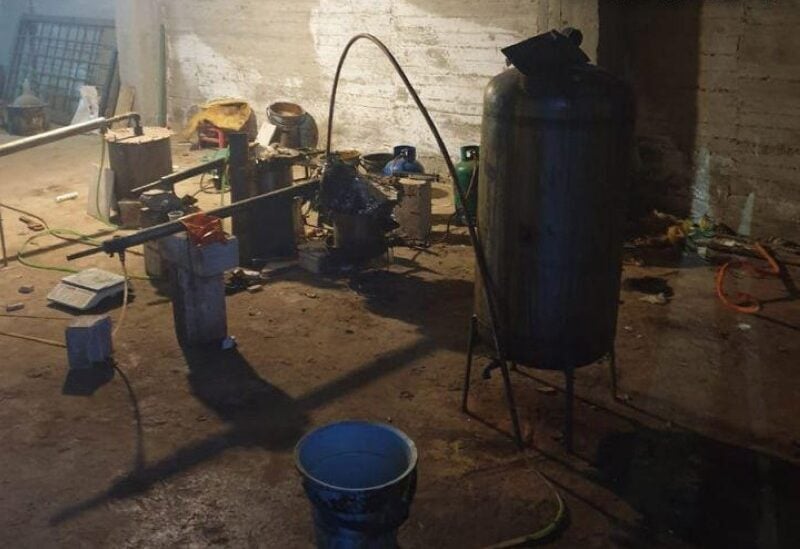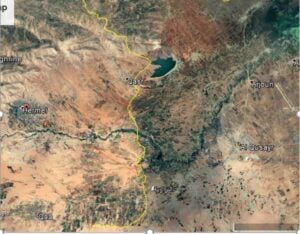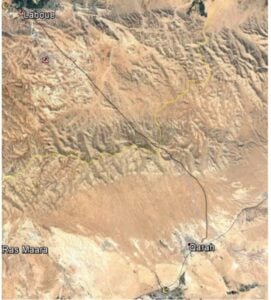
Captagon factory in Baalbek
At least 50 Captagon production plants are distributed between Lebanon, Syria, the most prominent of which is in the northern Bekaa regions, especially Brital and Hermel, while the others are distributed in Qusayr (which includes the largest number) and Qalamoun, especially in the town of Falita, the main road that connects Qalamoun to the Lebanese territories and to Arsal in particular, and the town of Assal al-Ward, the Syrian Center for Hussein Dagou Factories, which was the most heated area during the fierce battles between the regime on the one hand and the opposition factions, first, and then with the terrorist organizations, as they form the most prominent corridor that starts from Ras al-Harf in the Bekaa Valley, passing through the Mabhas region and from there to the town of Toufail, Assal al-Ward .. in addition to the factories that started production in Daraa, according to a source that follows up the smuggling operations, whether it was in the context of “Captagon” or weapons and other materials that provide funding, which began to dry up after the sanctions that affected the Syrian regime according to “Caesar Law” and institutions affiliated with Iran.
An official in the Syrian opposition told Voice of Beirut International that the Syrian regime resorted to creating a smuggling route between it and Lebanon, in cooperation with Hezbollah, to smuggle weapons and drugs in the first place that secures funding for their military system from equipment to the salaries of the elements and their families, and this shows the size of the financial crisis that they live, by taking risks in terms of detecting smuggled shipments, so that they may be able to pass one of the dozens that they export …

Therefore, the agricultural lands between the two countries, especially in the western Qalamoun region, which has become fertile ground for the cultivation of hashish and narcotic substances of all kinds, are considered under the supervision of “Hezbollah” and in cooperation with the Fourth Division led by Maher Al-Assad.
The source continues that weapons take a large part of the smuggling process back and forth, as most of these weapons that are transferred to Syria were previously smuggled into Lebanon to protect them from bombing, and here it is necessary to review these crossings, which are divided into 4 main crossings or roads: The first is a military one that was paved by “Hezbollah” for more than a year, it starts from the Lebanese town of Hermel to the town of Nizari in the countryside to reach the most fortified place in Al-Qusayr, where weapons are stored in their warehouses, to be subsequently determined for its transfer destination when necessary and it is protected by Iranian militias through several points .

As for the second road, it starts from the town of Labweh, passing through the hills of the town of Arsal, to the Syrian town of Qara in Western Qalamoun.
The third crossing, it is at the point separating the Syrian-Lebanese border in a mountainous area in the Ras al-Harf area that was paved to reach Ain al-Jouza area and then the village of al-Toufail (which is administratively affiliated with the Lebanese state) to Rankous in the western countryside of Damascus, and its target is the town of “Al-Qatifah”, which is considered The main center for storing smuggled weapons and contraband.
Regarding the fourth crossing, which is the longest among the aforementioned, it is used by the Iranian and Lebanese militias in order to secure smuggled materials into the Syrian interior. It was adopted recently to avoid targeting smuggled cargoes by the “Israeli Air Force”.

Here, the source identifies the most important activities carried out by “Hezbollah” at the Lebanese-Syrian border, the most prominent of which is the purchase of large agricultural areas in several areas, including Ain Al-Jouza through a number of brokers, where these lands are transferred to become suitable for drug cultivation and the construction of “Captagon” laboratories by Hassan Duqo and his partners “Thus, the region becomes a huge center for these pills production, and they are considered very safe, especially since the area is of a mountainous nature full of caves.
The source points out that there is a very active aspect within the party’s plan, which is equal to the importance of the materials mentioned previously, and it has not been significantly highlighted, it is related to chemical waste plants that extend from Asasl AL-Award – Rankos – Qalamoun, which were previously lands cultivated with thousands of fruit trees. This matter was raised. In the past, however, no result was reached, which led to a complete change in the features of the region.
The “Wadi Hanna” area, which is about 2 km from the Lebanese-Syrian border, has its share of chemical weapons, where a tunnel and a warehouse for these weapons were dug , that reaches the inside of the Lebanese mountains and is called Sahlat AL-may area.